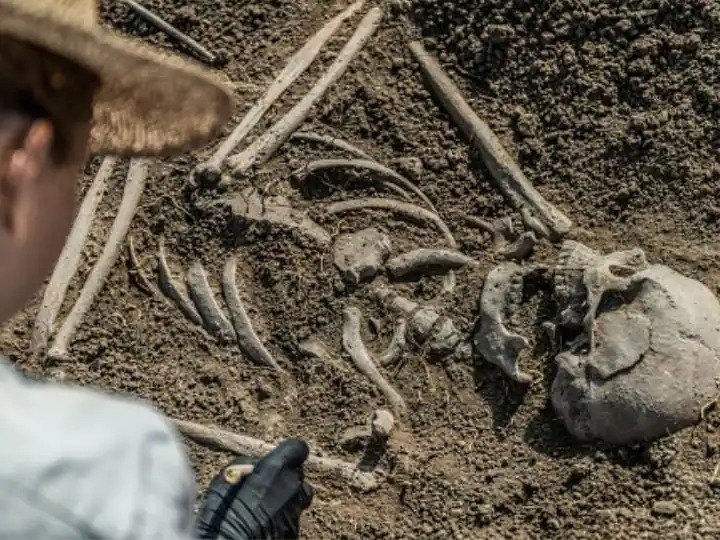350-year-old remains in a Stone Age site in Portugal
A team of researchers have found an African man buried in a prehistoric shell midden in Amoreira in Portugal. The man lived just 350 years ago.

A team of researchers have found an African man buried in a prehistoric shell midden in Amoreira in Portugal. The man lived just 350 years ago. A shell midden is an archaeological feature consisting mainly of mollusc shells.
The discovery is very surprising because Amoreira and other midden sites in the Muge region in Portugal are well known by archaeologists for the cemeteries of the last hunter-gatherers living in the area 8,000 years back, a statement issued by Uppsala University in Sweden said.
Researchers from Uppsala University and the University of Lisbon, Portugal recently investigated this burial by combining biomolecular archaeology, ancient DNA, and historical records. The study was recently published in the Journal of Archaeological Sciences.
Where Was The First-Generation African From?
The scientists determined that these were the bone remains of a first-generation African, probably from Senegambia, which is a historical name for a geographical region in West Africa. The man arrived in Portugal via the Trans-Atlantic Slave Trade, and died around 1630 and 1760 AD, the study said.
What Did The Man’s Diet Consist Of?
The researchers analysed his genetic signature and dietary isotope. The genetic signature indicated African ancestry, the study said. The man’s diet consisted of plant foods commonly found in Senegambia, the dietary isotope analysis showed. At that time, Senegambia was not in Portugal.
According to the study, the African man’s diet also consisted of minor consumption of low trophic level marine foods, such as bivalve molluscs.
How Did The Researchers Determine The Place Of Origin?
The researchers determined that the place of origin could be narrowed to the coastal areas of western Africa, in present-day Mauritania, Senegal and Gambia.
The study said that the oxygen isotopic signal in the bone bioapatite reflected the ingested water at the place of origin. Bioapatite is a form of calcium phosphate that is the major component in the mineralised part of vertebrate bone teeth.
Africans were brutally dislocated from their homeland for more than three centuries. They were forced to adopt a new religion, a new name, and a new language.
In order to preserve their socio-cultural identity, African communities in Portugal developed certain strategies, the study said. This was similar to what was documented in the Americas. The researchers used their results to search for other clues that could help them understand the motivations behind the unusual burial, the study said.
What Does The Unusual Burial Indicate?
According to the study, the burial of the man in an 8000-years-old site could be an example of the maintenance of African cultural beliefs and practices by African people who translocated to Europe. However, this practice is not documented in historical records.
Amoreira, like many other archaeological sites, was probably known by the local populations as an ancient burial ground, the study said. This is because animal and human bones are abundant at the site.
The grave was arranged with a layer of sand. Hence, it suggested a level of preparation for burial in a seemingly deviant place, the study said.
In Portugal, the dead were generally buried on religious grounds, from the Middle Ages up to the mid-nineteenth centuries. But this African man was not buried in a religious ground, the study said.
The researchers found that interestingly, up to the present day, shell middens are actively used in western Africa. The usage of shell middens, particularly in Senegambia, includes ancient and modern cemeteries, the study said.
The burial of the African man in a Portuguese shell midden could indicate the recognition of the site as a meaningful place by the African community of Amoreira, the study said. This was probably according to West African socio-cultural traditions.
In a cemetery of enslaved people in the Canary Islands, other examples of non-Christian funerary practices have been identified. The researchers noted in the study that future investigations may clarify if this was an isolated event or part of a broader movement.
Was The African Man Murdered?
The researchers attempted to identify this individual and found a document from the local church dated November 1, 1976, the statement said. The document mentions the murder of a young man named João at Arneiro de Amoreira. This is precisely the region where the bone remains were found.
According to the statement, the church registers state that the victim was buried in the churchyard. However, the bones were unearthed at Amoreira. The researchers’ findings indicate that the person’s parents were of African ancestry, the study said.
The authors noted in the study that the intersection of several lines of investigation enabled them to reconstruct specific aspects of the life and death of a first-generation African individual in Portugal during the Trans-Atlantic Slave Trade period.





